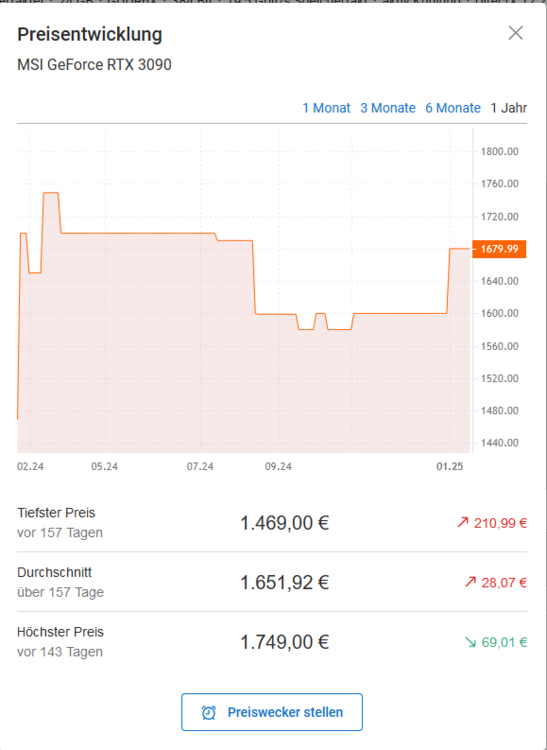-
Posts
2069 -
Joined
-
Last visited
Content Type
Profiles
Forums
Events
Everything posted by okopanja
-

Expectation on Air to Air missiles of the MiG-29A?
okopanja replied to pepin1234's topic in DCS: MiG-29A Fulcrum
There is a large difference between knowing and believing. -

Expectation on Air to Air missiles of the MiG-29A?
okopanja replied to pepin1234's topic in DCS: MiG-29A Fulcrum
Its a bottle that can be inserted. Depends on ground crew and loadout. -

R530 family and its current greatest problem/s
okopanja replied to MysteriousHonza's topic in Bugs and Problems
I think this is actually the right place. Fix likely is on ED's side. -
You can run this model on 8B, works fairly well. IMHO rebound occurred after claims of derived work, however using this AI feels very much different from chatgpt. As for "home" use it appears that VRAM size is more relevant than number of cores or their speed. E.g. you might be better with 3090 than with 4070 or 4080 when using it for AI. Also they sank again, likely due to gwen 2.5 Max announcement.
-
Yugoslavia had SPO-15 from the very start. In fact the training of initial batch of pilots happened roughly at the same time as Warsaw pact countries. E.g. 1 month earlier the Eastern Germans were there. Also GCI Lazur cabine for 29s were delivered and I do know one of them was deployed on the top of Goleš mountain (bumped into sat image marking its position). Irrespective plan was to have these 29s integrated into AS-84, just like Mig-21bis was integrated. Sadly no R-27T. As for downgraded radar, I did not find any specific details for that. It looks like delivered options are different from country to country.
-
I meant the technical details. Is there any visual difference other than paint?
-
Any visual ques? If I recall correctly Hungary got them after the Warsaw Pact dissolved. From that point it could be B
-
Western countries did place all the semiconductor future hopes into a single box called Taiwan. No surprise there - it was profitable, except one tiny problem - this is not exactly the safest place on Earth. It's only natural for current administration to realize that this poses existential risk. Earthquakes and/or foreign factory can easily disrupt the source of the chips. Besides, USA wants rightfully to reclaim the lead in technology they essentially developed. When facing tariffs any export oriented economy will think twice before not complying, Taiwan or Germany, it does not matter much. So TSMC, please come to USA.
-
Well aware, but the thing here is how you market and sell it. From the money point of view the GPU core is the primary value in such combo, with CPU being added value, as opposed CPU-as-main-value. Meanwhile with DEEPSEEK, I wonder if Jensen should reconsider the pricing for 5090 (and the rest)... Looks like he will have extra capacity to offer within high end chips to the gaming market.
-
This depends, I would expect from such weapon to be able of sort of selectivity. E.g. being able to stick to the specific radar in TWS would be hard requirement for soviet electronics in 80s, unless they relied on western components. The next candidate would be: any radiation within selected 1GHz band from 8-12GHz on last extrapolated angular position. E.g. you do not care much about the signal as long as it is in the expected volume of space. As for jammers we kind of have an air-HARM against jammers: LD-10 will prefer jammer to actual radar in active mode.
-
Yes, Hwang is credited shooting down Peric/Radosavljevic while using TWS in 1999. He and the wingman fired 4 AIM-120. We know since Mike Shower criticized junior pilot for heading to a merge in TWS. It worked well, since both Perić and Radosavljević were trying to climb 7000m. I did not publish this story yet, but you can find in English section of Mig-29 FF module 4 encounters I translated. For this particular flight it will take a longer time, since Peric did provide lots of details. Shower himself merged twice with 29s on first evening: 1. He fired on Nikolic he AIM-120 and Sparrow at 14nm, followed by 1 more AIM-120 at around 5nm, since first 2 missed 2. He fired on Kulacin another AIM-120, which also missed He used STT. Unlike Hwang, Shower faced 2 low flying Mig-29.
-
Yes, this is how NVidia ensures the prices remain high. Up there you can see prices here in Germany. 3090 price is still high, with minimal suppliers. 4090 price is rising in anticipated of 5090! The only explanation is that NVidia ensures that supply remains limited, so actual number of new 4090s at the moment is very low. Jump started in October, which means that at least as of September they may have chocked the availability. This is not difficult to achieve since they know exactly the state of stocks and actual demand. I am pretty sure that we will see this before 6090 as well before it gets hyped they will push 5090 prices up, but cutting off supply. If I have to predict for release of 6090 Jensen will wear red tight skin jump suite and all will be "good" again.
-
makes sense and explains a thing or two...
-
At the time when they were designed SARH was the dominant method of guidance. Passive would have allowed the guidance beyond the range of the radar + unlike SARH no warning. Opposing SARH or strong radar emission of AWACS or dedicated jamming platforms would be good source of signal. Meanwhile somebody pushed the game into direction of ARH, so obviously these missiles have lost the prior importance. It does not make much sense to use them when the better tool is available except only in specialized cases. Still they did appear in manuals and WCS. Still unanswered question would be what kind of target it would be used against. Given the method of acquisition, the fighter would likely have to get azimuth and altitude at least.
-
Reproduced: it goes after jammer. The only way it can actually hit aircraft is if it is on ground and not moving fast. Would be interesting to see if HARM would do the same. Flanker provided to show that ECM is on. JF-17 LD-10_against jammer.trk






